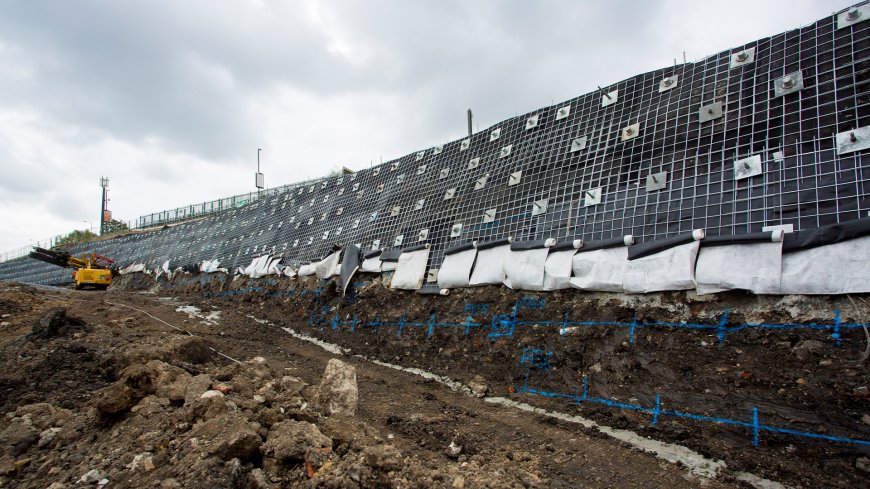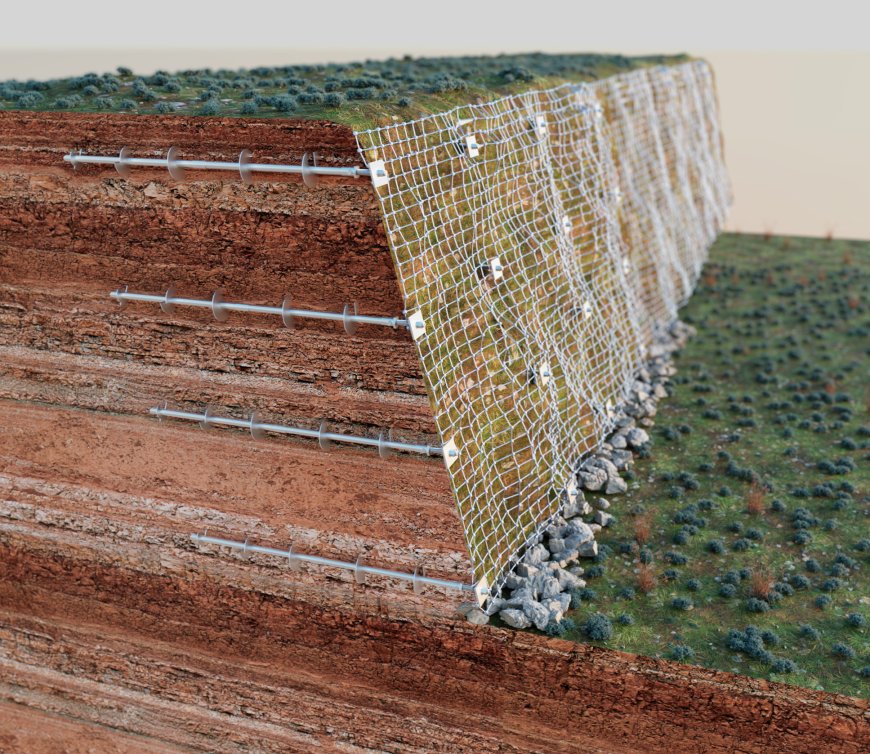Effective Ways to Strengthen Slopes and Foundations in Construction Projects
A strong foundation and a slab are the backbone of any building that provides it necessary support and help in evenly distributing the weight of walls, floors, and roofs to the ground.

A strong foundation and a slab are the backbone of any building that provides it necessary support and help in evenly distributing the weight of walls, floors, and roofs to the ground. It minimises the risk of collapse or settlement issues, prevents cracks, and ensures structural stability and durability. Therefore, creating a strong foundation is necessary to guarantee the longevity of the building.
In the UK, where soil conditions are usually challenging and surfaces are unstable, a weak foundation can cause serious problems, including structural damage. From using specialised materials to modern techniques like underpinning, you can use various options to strengthen existing bases or create new foundations.
Here are 10 effective ways that can help you strengthen slopes and foundations;
1.Soil Nailing Techniques
Soil nailing is a clever method used to strengthen slopes and excavations. It involves inserting long, strong steel bars into the slope or wall to hold the soil together and provide extra support. After installing the nails, a layer of concrete is often sprayed over the surface to make it even stronger. This technique is useful for stabilising existing slopes without needing to rebuild the whole area.
2.Using Retaining Walls
Retaining walls are one of the most common solutions for holding back soil on slopes. These walls help stop the soil from moving downhill. They are built from strong materials like concrete, stone, or brick and can greatly improve the stability of both small and large slopes. Make sure to choose the right size and type of wall depending on the soil conditions and how much pressure the soil will create.
3.Installing Geotextiles and Geogrids
Geotextiles and geogrids are special fabrics placed in the soil to help hold it together. They add strength to the ground and improve drainage. These materials are often used when building new slopes or repairing existing ones. The best thing is that they are easy to install and can be very effective at preventing erosion and landslides as they allow water to pass through while keeping the soil in place.
4.Ground Anchoring Systems
Ground anchors are another strong method to stabilise foundations and slopes. In this method, heavy-duty steel cables or rods are drilled deep into the ground and fixed in place. These anchors pull the structure or slope back into the ground, giving it greater stability. It is often used for supporting retaining walls, bridges, and buildings on steep slopes.
5.Proper Drainage Systems
Poor drainage leads to water build-up, which can weaken the soil and cause landslides or cracks in foundations. So, installing good drainage systems, such as pipes, ditches, or gravel layers, is also an effective way to strengthen a foundation. It helps remove water safely, maintaining strength and stability.
6.Compaction of Soil
Before starting construction, the ground should be properly compacted because the loose soil is weak and can shift over time. Compacting the soil increases its strength by pressing it together tightly. You can use machines like rollers and compactors to remove air pockets and make the soil firm. It will give much better support to any building or road built on top of it.

7.Deep Foundations
In areas with soft or unstable soil, deep foundations are often needed. Piles or drilled shafts are commonly used for this purpose, which go far down into the ground until they reach strong soil or rock. It helps transfer the weight of the building to stronger layers below the surface, giving the structure much better support.
8.Vegetation and Planting
Planting grass, shrubs, and trees is a natural and effective way to stabilise slopes. The roots of plants hold the soil together and reduce erosion. Vegetation also helps absorb rainwater, which reduces the amount of water running over the surface. In addition, plants can improve the appearance of construction sites and blend them into the natural environment.
9.Chemical Soil Stabilisation
Sometimes, chemicals are added to the soil to improve its strength and stability. Materials like lime, cement, or special polymers are mixed into the ground, which helps bind the soil particles together, making the soil harder and less likely to shift. This method is useful in areas where traditional methods are not enough.
10.Regular Monitoring and Maintenance
Even after a slope or foundation has been strengthened, it needs regular monitoring and maintenance. Over time, weather changes, heavy rains, or nearby construction work can affect stability. Regular checks help you spot small problems earlier and prevent them from turning into major issues that are quite challenging and expensive to fix.
Key Takeaway
Each construction project is different and demands the right solution depending on the local soil conditions, the size of the structure, and the environment. You can consider all these methods and choose the one that best on your building needs to create strong foundations. Consulting with reliable piling contractors like CJB Piling can provide you with more information about each method and choose the perfect one that ensures your building’s durability and stability.





































































![https //g.co/recover for help [1-866-719-1006]](https://newsquo.com/uploads/images/202506/image_430x256_684949454da3e.jpg)
























![[PATREON EXCLUSIVE] The Power of No: How to Say It, Mean It, and Lead with It](https://tpgblog.com/wp-content/uploads/2025/06/just-say-no.jpg?#)




















































